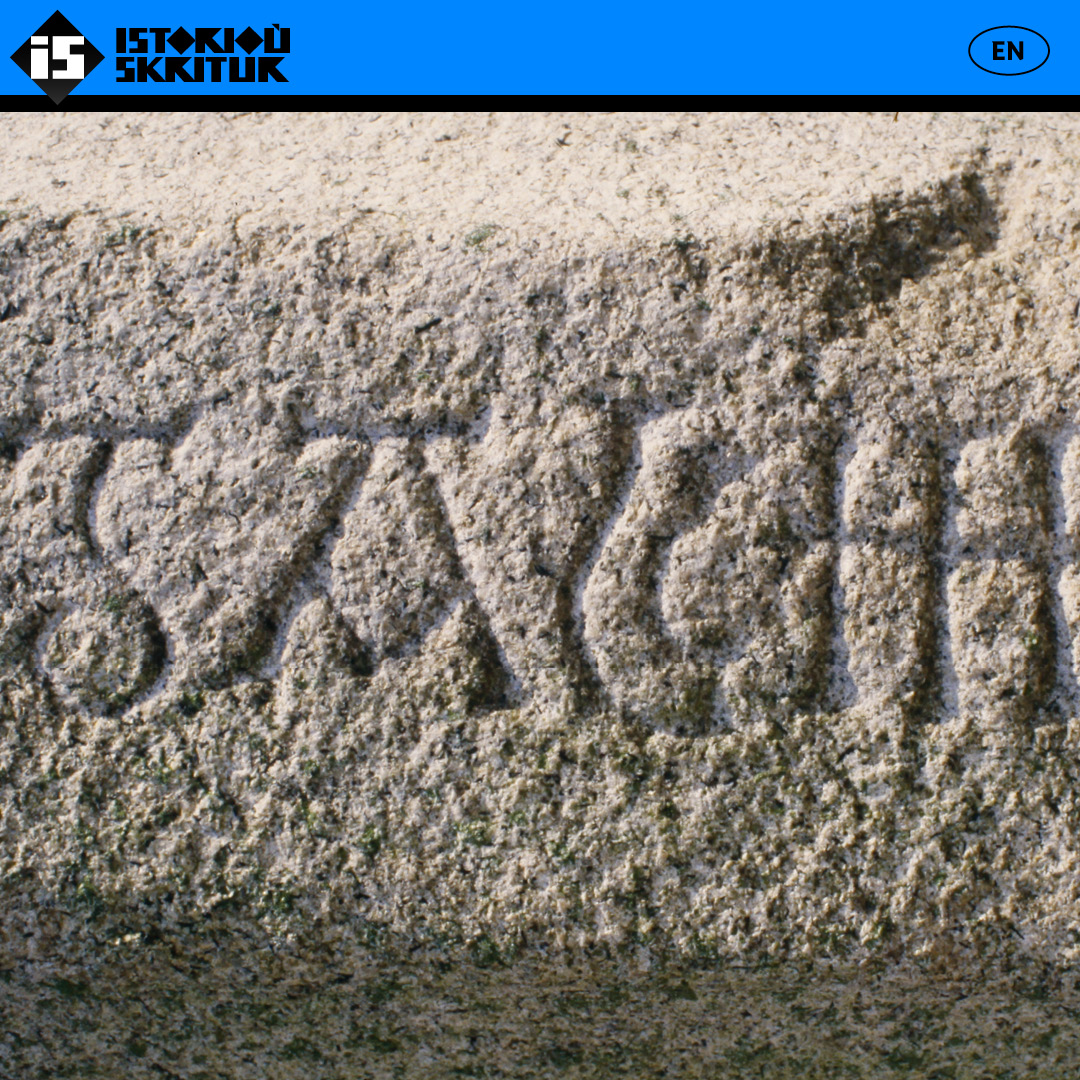The Origins
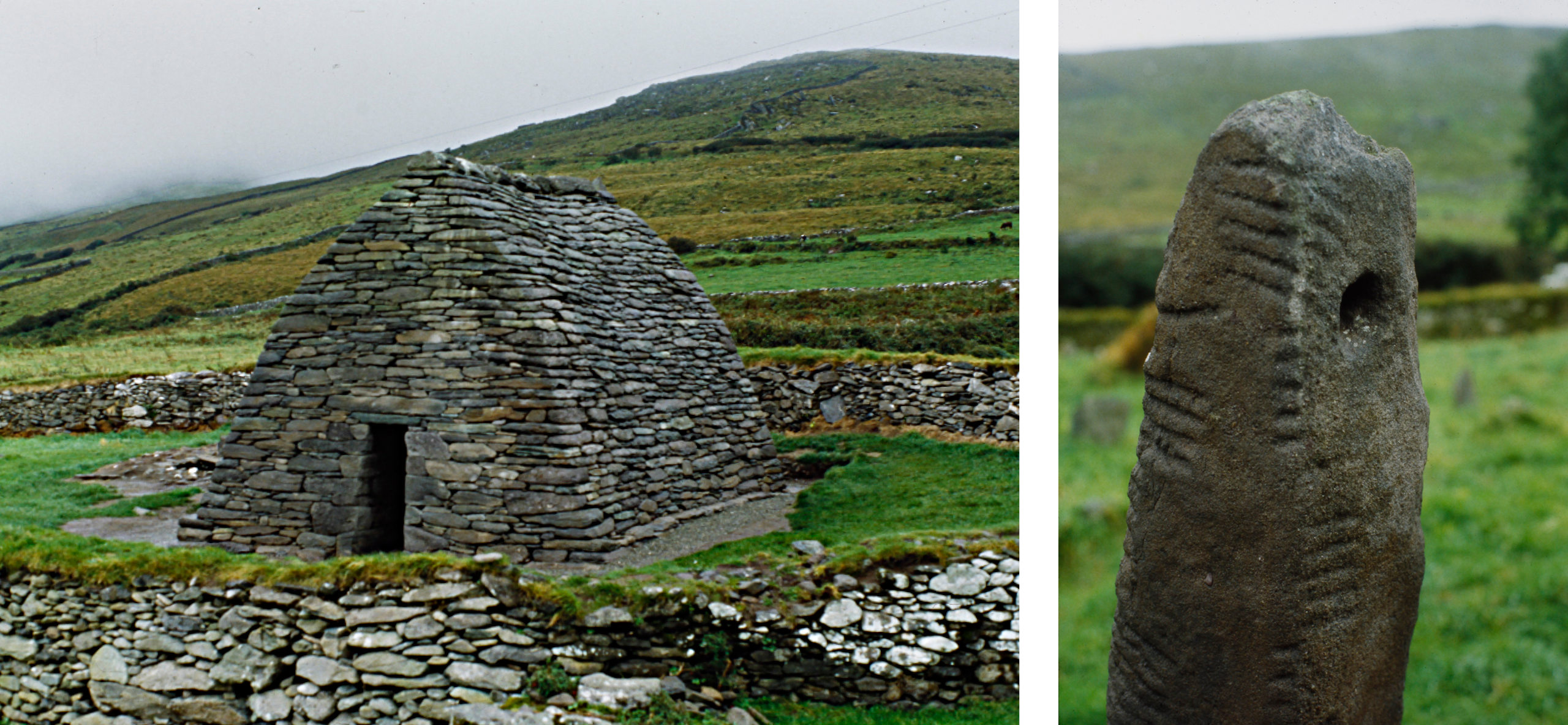
Ogham
Ogham, from the name Ogmios, the Celtic god of writing, was the first form of writing known in Ireland, in Scotland and in Wales. It appeared during the 4th century. Oghamic writing is founded on a classification of phonemes, which are the voiced elements of articulated language (vowels and consonants). This writing system is composed of a set of glyphs, signs engraved on a stone stele, which are oblique or perpendicular to a vertical axis materialised by an edge of the stele. The glyphs are read from bottom to top. Photos : Gallarus Oratory (8th c.) and oghamic stone. Co Kerry ; Ireland.
Fotoioù : Oratouer Gallarus (VIII ved k.) ha maen ogamek. Co Kerry ; Bro Iwerzhon.
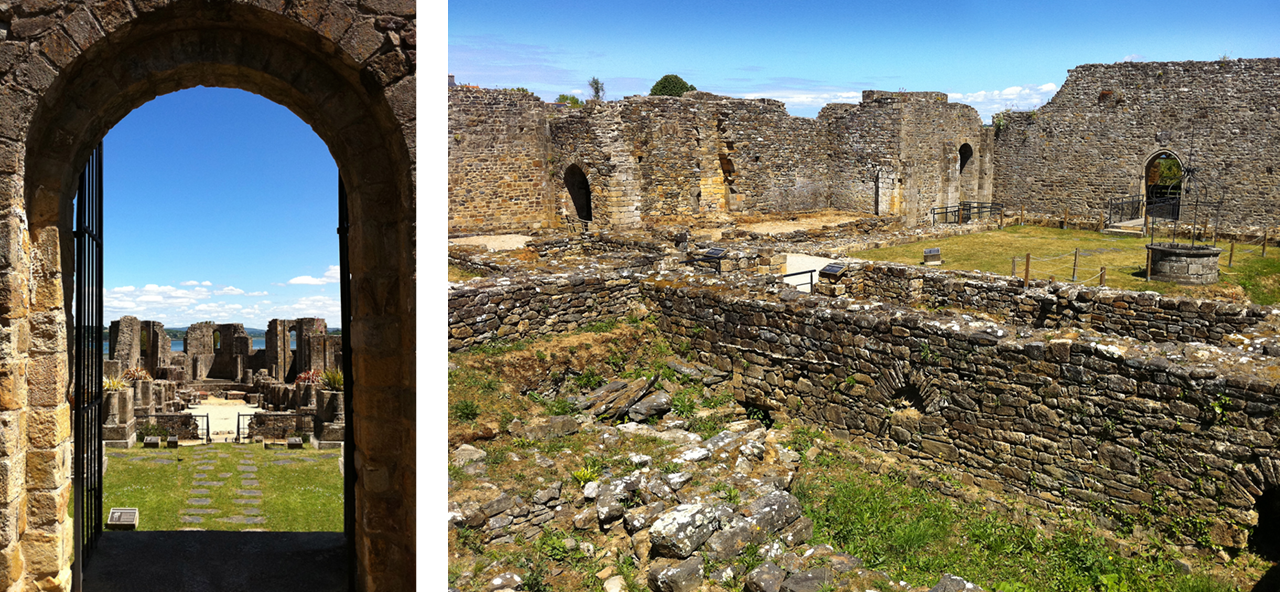
Landevenneg
During the 5th century, Ireland was evangelised and gradually adopted the Latin language and alphabet. The island became home to a great number of scribes copying the Roman semi-uncial which had been brought over from the Continent by Padraig, Saint Patrick. Many Irish and Breton monks left to christianize Scotland, England and Armorica: Saint Columban founded the monastery of Iona (island to the West of Scotland), and Aidan that of Lindisfarne (island to the North-East of England). As for Ronan, he established his hermitage in the Neved forest of Locronan, whereas Gwennole founded the abbey of Landevenneg (in Armorica).
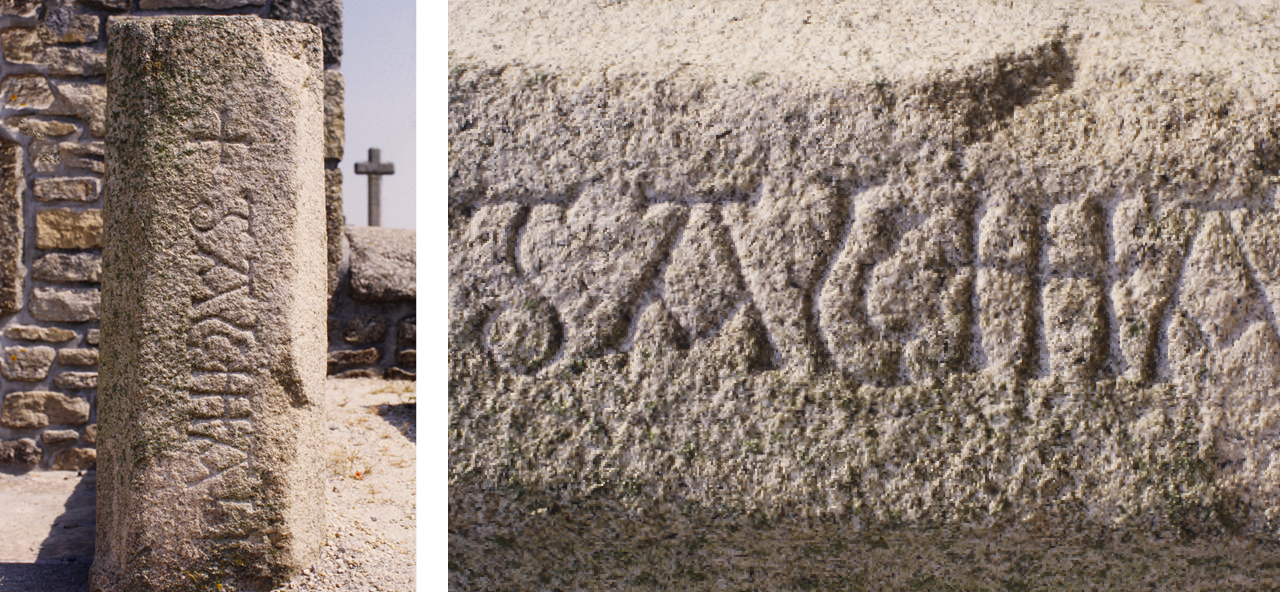
Gallmau
The stele at the entrance of the Saints cemetary at Lanrivoare (Brittany) dating from the 8th century testifies to this relationship of the Continent with Ireland. Indeed, one can read inscriptions in Irish uncials on it : “gallmau” (foreign's servant).
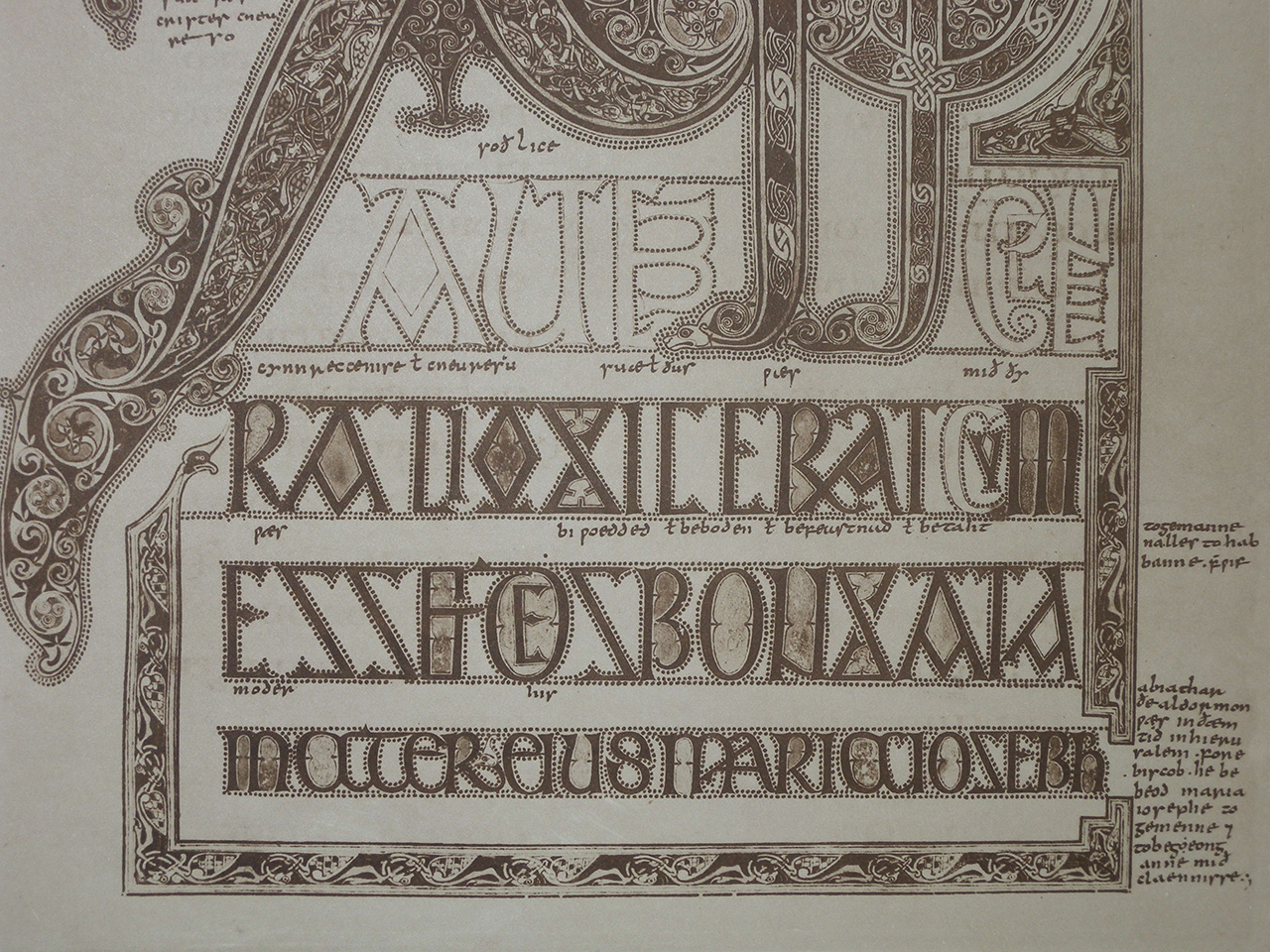
Durrow, Lindisfarne & Kells
Between the 7th and 9th centuries, not only did Irish scribes copy the Roman uncial, but they also created their own script, the Irish semi-unicial which integrated influences from Celtic and Anglo-Saxon pagan art into the Latin alphabet. The Book of Durrow (664 -700), the Book of Lindisfarne (700) and the Book of Kells (Iona and Kells 800) are among the most beautiful manuscripts to have survived.
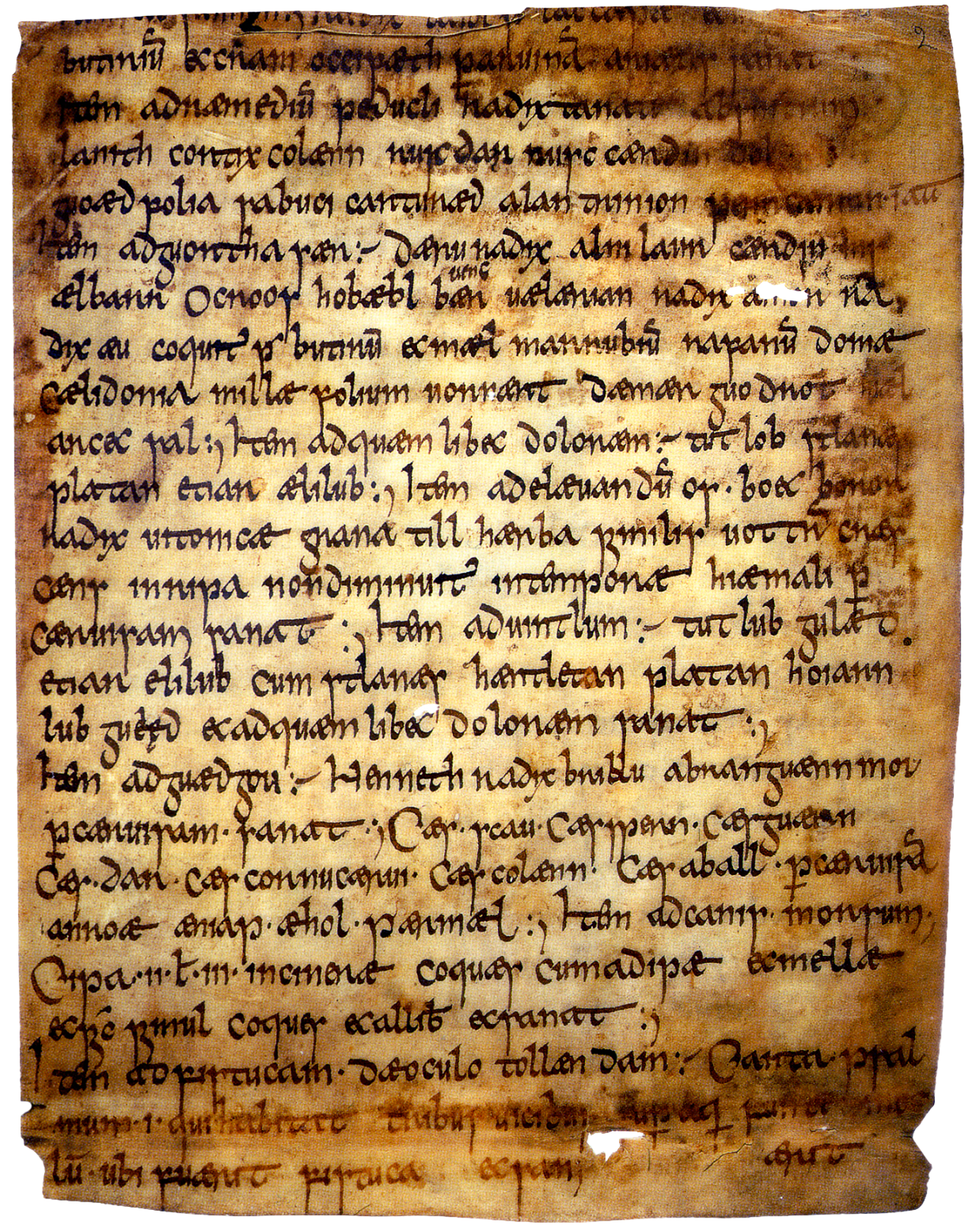
Breton has been written since the 8th century
Gwennole Ar Menn : “Breton was written long before the invention of printing, since the oldest known manuscript*, a medical treaty mixing both Latin and Breton, dates back to the end of the 8th century, and is thus older than the most ancient French manuscript.”
Leyde manuscript. Universiteitbibliotheek, Leiden (The Netherlands).
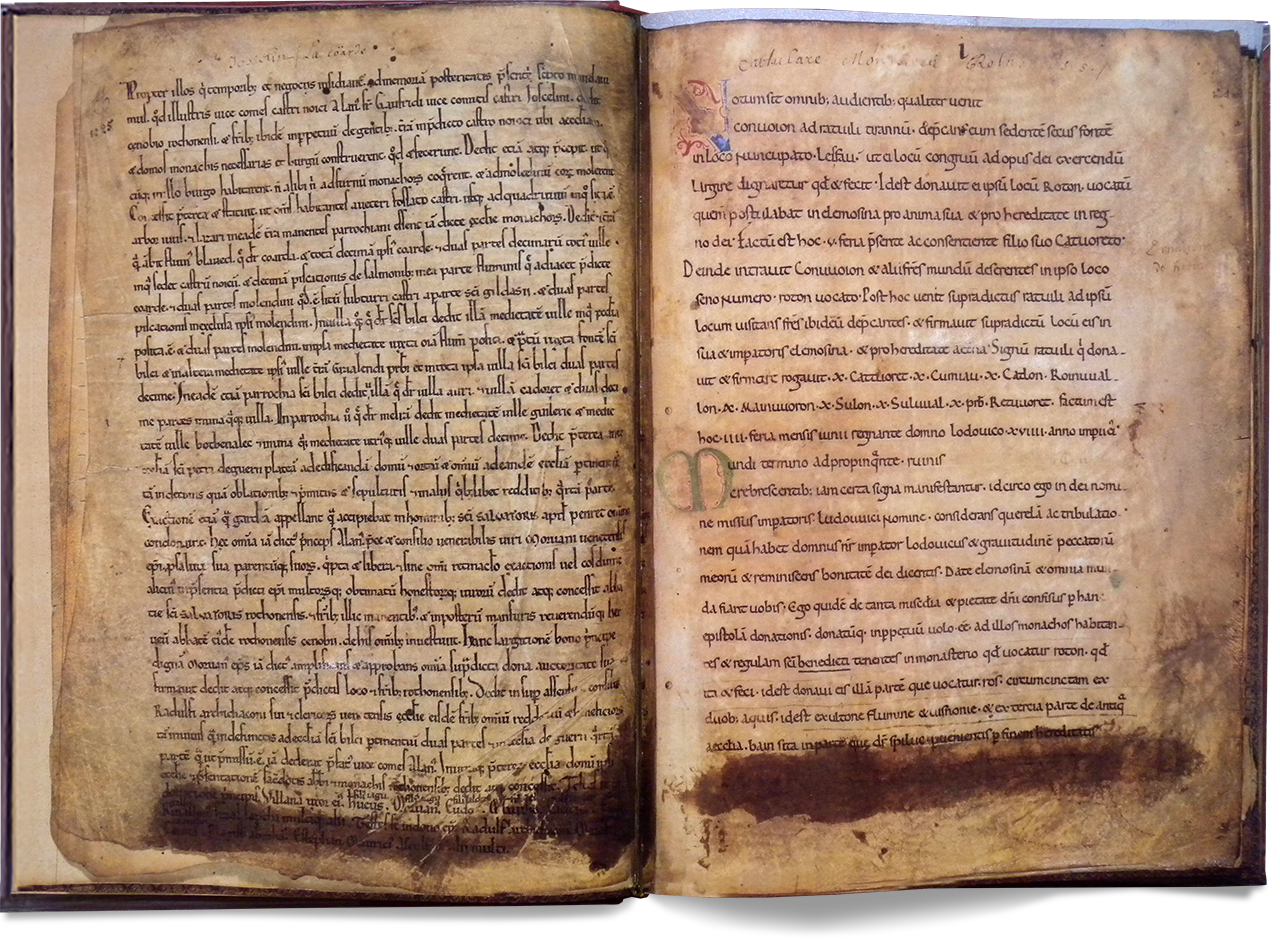
Landevenneg and Redon, the cradles of writing in Brittany
Breton manuscripts; 9th–11th centuries. «The Breton scriptoria were very active during the high Middle Ages. Around one hundred manuscripts were copied from the 9th to the 11th centuries, among which the Harkness Gospel, a Gospel copied at the Landevenneg abbey between 850 and 900 and held by the New York Public Library (USA).
The cartularies, collections of charters, are another type of manuscript. Those of the abbeys of Redon and Landevenneg, dating from the 9th–11th centuries, assemble texts which are essential for understanding the history of Brittany.»
![]()
The emergence of printing (15th century)
«Printing appeared in Paris in 1470 and in Brittany in 1484. In 1485, three printing-shops were in service including that of a city of Lower Brittany, Tréguier, where the first Breton printed matter by Jehan Calvez, the Catholicon (Jehan Lagadec, 1499), a Breton-French-Latin trilingual dictionary for students.»
*in Bréhan, Robin Foucquet and Jehan Crès printed the first book “ The Demise of Our Lady”.
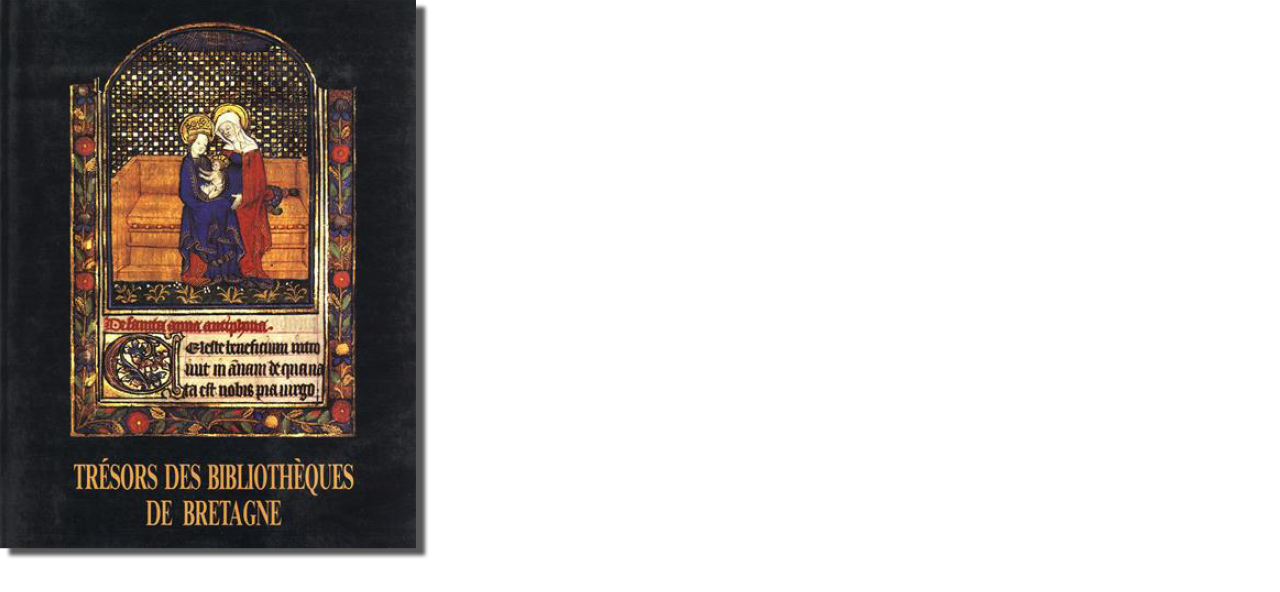
Breton printing before the Revolution (17th century)
«The number of printing-shops increased. In Lower Brittany, printing started in Brest (1681), in Port-Louis (1694) and in Tréguier (1677). Towards 1700, there were 44 printers working in Brittany, including a dozen in Lower-Brittany. But the increase in the number of printing-shops and printed materials was worrying for the Royal power since it threatened the latter’s control of printed production. It thus intervened to limit the number of printers through State Council rulings. The first one, in 1704, brought the number of Breton printers down from 44 to 17!».
Further reading
• Gwennole Ar Menn, Le livre en langue bretonne, in Trésors des bibliothèques de Bretagne, 1989
• Gwennole Ar Menn, L’imprimerie-librairie Blot à Quimper en 1777, in Mémoires de Bretagne, 1985
• Gwennole Ar Menn, Les catalogues des libraires bretons de 1695 à 1746, in Mémoires de Bretagne, 1985

